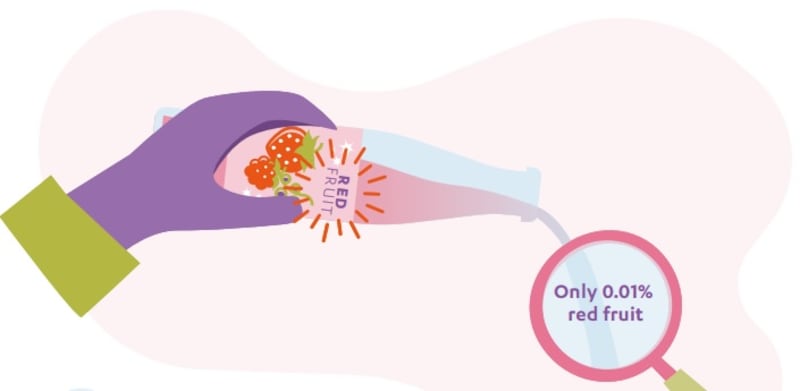Food manufacturers are deceiving the public by mislabelling their products as “artisanal” or homemade and implying they are full of healthy whole grains and fruit when they are not, according to a new report.
Food labelling needs to be toughened up, says the European Consumer Organisation (BEUC) which has published the report. While manufacturers have to put salt, sugar and fat levels on the back of the pack, there is nothing to stop them making false claims and using deceptive pictures on the front.
Three areas are singled out in the report called Food Labels: Tricks of the Trade.
1) Foods are labeled "traditional", "artisanal" or "natural", evoking the idea of small-scale craft food-making, when they are processed in a factory. "Recipes which contain industrial dyes or additives which could not be reasonably considered as traditional are nonetheless labelled as such," says the report. Referring to Ireland, the report adds that "the country's food authority published guidelines in 2015 to support food manufacturers who want to use the terms 'artisanal', 'farmhouse', 'traditional' or 'natural' with their products."
2) Phony fruits. The picture on the front of the pack of healthy fruits such as strawberries or cherries belies the content, which may have only a tiny amount or use just flavourings and colouring.

3) Whole grain only in the name. The true amount of whole grain may be listed among the ingredients in the small print on the back, but the packaging for pasta that is 55% whole grain may look no different from that for 100 per cent whole grain pasta.
The report cites an example from Norway of a "natural turkey fillet", which was just 53 per cent turkey – the rest was chicken and additives. An artichoke soup in Italy boasting of "natural ingredients" used flavourings and was only 2.7 per cent artichoke. The report points out that recently, the UK advertising authority censured Pret for describing food as "natural" that contained E-numbers. In Belgium and the Netherlands a popular dairy brand is labelled as a 'red fruit yoghurt drink' with pictures of strawberries and raspberries on the packet – yet there is only 2 per cent fruit juice in it and most of that is cheaper apple.
The report pulls together data from consumer organisations in a number of European countries.
It can be difficult to identify if a product is Irish, or whether it was just packaged in Ireland. Rose Costello's food labelling series has tips on what to look out for.
– Guardian












